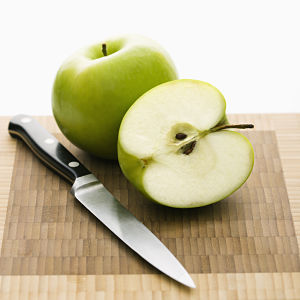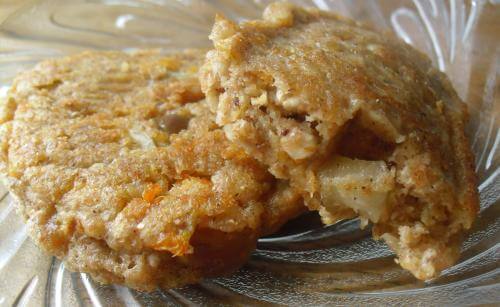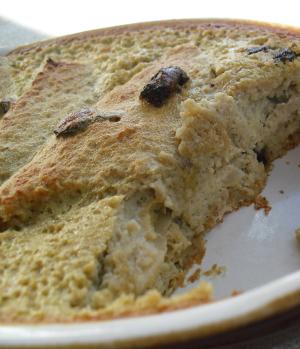Apple Baby Food Recipes, Ideas and Tips
Updated: Aug 10, 2023
Try our simple and delicious apple baby food recipes and discover why apples are one of the best loved foods for little ones!
Why Apples Are So Good for Baby
Apples are among the most perfect fruits for use in your baby food recipes!
- Apples are considered to be one of the least allergic foods
- Apples are easy to digest
- They are versatile and work well in sweet OR savoury recipes
- They are very quick and easy to prepare
- They are available all year round in most parts of the world
- Babies love them!
But that’s not all – apples offer a variety of health benefits, too!
Yes, the old saying ‘An apple a day…’ may be correct, because apples
- Help protect the body against certain cancers
- Help prevent heart disease
- Help control cholesterol levels
- May reduce asthma symptoms
- Reduce the risk of diabetes
- Prevent constipation and keep your baby ‘regular’*
* This applies to apple juice but not applesauce. Applesauce may actually make constipation worse as it contains pectin, which firms up the stools.
More about the fibre in apples
Apples contain 2 types of fibre – soluble and insoluble.
- Soluble fibre serves a very useful function in later life as it prevents the build-up of cholesterol in the lining of the blood vessels walls.
- Insoluble fibre provides bulk in the intestinal tract. This holds water, which cleanses the digestive system and moves food along quickly.
Which is best for baby – whole apple or apple juice?
Apple juice contains fewer cancer-protective antioxidants than whole apples and is lower in dietary fibre.
To get the maximum nutritional benefit from whole apples, it is better to prepare them WITHOUT peeling them when appropriate.
That's because approximately 2/3 of the fibre and antioxidants are in the peel.
Organic apples are best, as non-organic apples appear on the Environmental Working Group’s list of ‘The Dirty Dozen’ – those fruits and vegetables most commonly contaminated with pesticides.
This means that you'd need to peel non-organic apples to reduce the risk - and you'd lose most of the important nutrients at the same time.
Please visit this page to find out more about when to peel fruits and vegetables for your baby
If you DO decide to give your baby apple juice, then choose cloudy juice rather than clear because it is richer in nutrients.
Choosing and preparing apples for your baby
Always look for firm, brightly coloured apples with no bruises. Avoid those with any sign of wrinkling to the skin.
Russetting (the appearance of little ‘leathery’ patches on the skin) is quite normal and not at all harmful.
However, many people just don’t like the appearance – and russetted apples are becoming less popular as a result!
HOW TO STOP CUT APPLES TURNING BROWN
When you slice an apple, the flesh turns brown fairly quickly.
Some apples turn brown more quickly than others (we find that Red Delicious tends to be the worst, whereas Golden Delicious apples stay white for longer).
This reaction happens when phenolic substances inside the apple meet oxygen and turn into melanin.
This process may cause some loss of vitamin C.
The best way to prevent an apple from turning brown when sliced, therefore, is to limit its contact with oxygen.
And the easiest way to do this is by soaking it!
Try soaking sliced apple in apple juice, pineapple juice – or even plain old water, if you’re stuck!
Many people like to rub cut apple with lemon juice, or add lemon juice to the soaking water.
This is very effective but it does affect the flavour a little (causing some babies to reject it).
Also, there is a small risk of allergic reaction to citrus in babies under one year of age.
A visitor’s tip…
There’s a type of apple I’ve found that doesn’t turn brown/gray AT ALL when you cook it.
It’s called Pink Lady and you don’t have to add any acid at all to retain the color. When I cooked it in a little water, it stayed almost a lemony yellow. And it’s such a nice flavor. Not too sweet/dry/bitter.
Bernie-Ann, St. John’s, Canada
The best apples for baby food
When preparing your apple baby food recipes, choose fruit that is naturally sweet.
Tart apples would require sweetening before most babies would be happy to accept them.
So which are the best apples to use?
Here’s a list of our favourites… plus the favourites of some of our readers!
- Red Delicious
- Golden Delicious
- Braeburn
- Honeycrisp
- Gala
- Empire (great for applesauce as it tends to go a lovely shade of pink!)
- Rome
- Fuji
Our top tip…
Stirring finely grated apple into baby food purees is a great way to add texture and help your baby make the transition to lumpier foods!
Apples as a first food for babies
With your doctor’s consent, offer cooked apple to your baby as one of his very first foods.
In fact, more and more parents are choosing to introduce their little ones to foods such as apple, pear, banana, sweet potato or squash from the outset, as opposed to the more traditional infant rice cereal.
Read more – is rice cereal the best first food for baby?
Here are some ways in which you can prepare a basic apple puree for your baby.
- Bake an apple by washing it, removing the core, wrapping it in aluminium foil and placing it in an oven pre-heated to 350 degrees F, 180 deg C for around 45 minutes (or until tender).
Then just puree or mash it, adding a little breast milk or formula if the texture is too thick. - Steam cubes of apple until tender, then either mash or puree as above
- Simmer apple cubes in a VERY little water until tender, then either mash or puree as above
Problems with your purees?
Apple baby food tips – cool combinations
Apple blends perfectly with cereal, many other fruits, vegetables… and even meats!
Try pairing cooked apple with
A yummy finger food recipe with apples…
When can my baby eat raw apple as a finger food?
Unfortunately, there is no clear answer to this question as babies – and their skills – develop at different rates.
Although some varieties of apple are somewhat ‘mushy’ in texture, many apples are crisp and crunchy.
If your baby has no (or few) teeth, he may find raw apple difficult to ‘gum’, meaning it could pose a choking hazard.
Our top tip…
Many parents like to offer their babies foods such as raw apple in a Fresh Food Feeder.
This enables little ones to create their own baby food purees by gnawing on chunks of fruit WITHOUT the risk of choking!
You will hear various opinions about giving raw apple as a finger food.
Whilst we have known parents who have given their little ones chunks of peeled apple to gnaw on with no problems whatsoever, we have also heard from parents whose babies have managed to bite a little piece of a larger chunk and have begun to gag and choke.
Safer options might be to cut fresh apple into VERY thin slices – or to grate it.
However, we strongly recommend that your baby is biting and chewing well – and that you seek your doctor’s opinion – before offering your little one raw apple as a finger food.
Find out more about offering raw fruits and vegetables to your baby
Apple Baby Food Recipes
basic applesauce
Below is our basic recipe – for more information please see our guidelines for perfect applesauce for baby.
4 medium apples, peeled (if necessary) and cored – use the types of apples suggested above to take advantage of their natural sweetness
water
- Chop the apples roughly, place in a saucepan and add around an inch of water or unsweetened apple juice. Bring to the boil, then lower the heat, cover and simmer gently until the chunks of apple are tender (around 10 mins).
- Don’t feel tempted to continue cooking the apple chunks until they resemble applesauce.
- By the time they LOOK like applesauce, they will be overcooked and watery.
- Instead, cook to the point where the chunks are tender… but still look like chunks! Remove the chunks of apple from the pan, then puree or mash them as desired.
- You may give this recipe a little extra ‘zip’ by adding a pinch of ground cinnamon, nutmeg… or even a drop of vanilla essence.
- Serve warm or cold – or freeze for later use (if you freeze the mixture, add the spices just before serving to preserve their flavour).
Apple and Cous Cous Dessert (6 months+ - for babies enjoying texture)
2 tbsp prepared cous cous (made according to the directions on the pack but using apple juice instead of water)
1 tbsp natural or homemade yogurt
1 tbsp prepared applesauce (see recipe above)
pinch nutmeg (optional)
- Preparation is simple – just combine the cous cous and applesauce in a bowl and top with the yogurt.
- If you choose, stir the nutmeg into the applesauce for an extra taste twist!
Apple and Sweet Potato Soup (6 months+)
2 tsp flour
2 tsp unsalted butter
6 fl oz (3/4 cup) low sodium or homemade chicken broth
2 tsp applesauce (use our recipe above)
6 oz (3/4 cup) sweet potatoes (cooked)
pinch ground ginger (optional)
pinch ground cinnamon (optional)
4 fl oz (1/2 cup) milk (use breast milk or formula if you prefer)
- Melt the butter in a heavy saucepan and stir in the flour.
- Cook, stirring constantly, until the flour/butter mixture turns golden.
- Pour in the broth slowly, stirring constantly, then add the applesauce, sweet potato, ginger and cinnamon.
- Bring the mixture to the boil, then lower the heat until the mixture is simmering gently.
- Cook for 5 minutes.
- Puree the mixture (either by transferring to a food processor in batches, or using a hand blender in the pot), then return it to the saucepan.
- Pour in the milk, warm through gently – and serve.
Sweet and Spicy Squash (6 months+)
1 medium acorn squash
1 sweet apple, peeled, cored and sliced
2 tsp unsalted butter (melted)
1 tsp pure maple syrup (optional)
pinch cinnamon
pinch nutmeg
pinch ground cloves
- Preheat the oven to 350 deg F (180 deg C).
- Cut the squash in half and scoop out the seeds (reserving them to roast as a tasty snack for older kids and grown ups).
- Cut each piece of squash in half again.
- Place the pieces of squash in a greased baking dish, with the skins facing up.
- Cover, place in the oven and cook for 30 mins.
- Meanwhile, combine the sliced apple, butter, maple syrup and spices in a bowl.
- Once the squash is removed from the oven, turn each piece over so that the skin side is down and cover the pieces with the apple mixture.
- Cover the dish and return to the oven for a further 20-30 mins, until tender.
- This squash can be mashed or pureed for your baby – and the remainder would make a wonderful side dish to accompany the rest of the family’s meal!
Chicken and Apple Dinner (7 months+)
1 boneless, skinless chicken breast (chopped)
1 apple, cored and diced
1 small sweet potato
4 oz (1/2 cup) courgette/zucchini, chopped
16 fl oz
(2 cups) homemade (or low sodium) chicken stock
tiny pinch of cinnamon
- Peel and dice the sweet potato.
- Bring the stock to a boil in a saucepan.
- Add the chopped chicken, lower the heat and simmer for 10 mins.
- Add the sweet potato and apple cubes and simmer for another 10 mins.
- Add the chopped courgette/zucchini and cook for a final 5 mins, until the sweet potato is fork tender.
- Puree or chop well, then sprinkle with cinnamon and serve.
A sugar free fruity treat…
Sources:
Dr Sears – Most and Least Allergenic Foods




